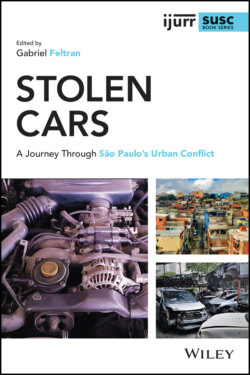Читать книгу Stolen Cars - Группа авторов - Страница 14
Ethical Issues, Diversity, and Typical Days
ОглавлениеNone of the researchers in our team got into a stolen car to do fieldwork; no-one carried hidden cameras or recorders or sought any information without the research subject having been clearly informed about our role in the field. None of the researchers negotiated interviews or testimonies in exchange for money or any other consideration other than respect, transparency, listening, and guaranteed anonymity. Our field relations have always been based on the longest possible stay as a way of building mutual trust.
“Academic researchers, at different levels of education, participating in a project on the stolen vehicle market in São Paulo” is how we all introduced ourselves to all our research subjects: from insurance company directors or police chiefs (through formal e-mails), to teenage car thieves, after preliminary conversations with the relatives, educators, colleagues, and neighborhood acquaintances who introduced us to them. Pursuant to Brazilian legislation on Ethics in Research in Human Sciences13 (for which we had fought), we worked with substantive consents, obtained verbally, thus avoiding any written consent that would invariably lead us to unethical situations vis-à-vis our interlocutors.
When, for whatever reason, there was any sign that we were not welcome in any space – as happened in notoriously corrupt Police Stations and in situations where cars were being dismantled during our initial approach – we simply discontinued our visit and disregarded the relevant data. In the vast majority of cases, however, our ethnography work unfolded very calmly in conversations marked by mutual trust, built over time by repeated visits to each space.
The only adventure we faced in the research project for this book was an intellectual one. We avoided exposing researchers to potentially violent situations as much as possible: the scenes of violence described in the book are based on reports from robbers and victims obtained in interviews and detailed ethnographic conversations in addition to systematic observation of videos from security cameras, available on the internet and transcribed by the team. The team’s safety was also assured by constantly monitoring the quality of relations with our subjects in the field.
All of our interlocutors knew that they would not be identified in our book and consented to the information they shared with us being used in our research. This way of working is not new for our team, having been tested in previous projects that also dealt with the line between legal and illegal (Bertelli and Feltran 2017). Three particularities of the (il)legal vehicle market deserve to be highlighted as they relate to relevant methodological issues. The first is the enormous diversity – and capillarity – of this market. This diversity can be seen in prices. We found the same car part sold for BRL 15.00 (0.015 MW) or BRL 450.00 (0.45 MW), depending on its origin and the consumer’s profile. Identical parts can be sold at very different prices depending on the profile of the consumer who enters the store. Illegal car parts are bought by both auto-parts resale stores in favelas and luxury car dealerships in exclusive neighborhoods. The car market is virtual as well as physical, poor as well as rich, and “tacking” strategies are used across the board. There is no stable “price list,” “average price,” or “typical route” in illegal markets. Negotiations are frequent, the prices situational and the regulations subject to change. The prices that we present in the book, therefore, are those empirically observed during our research.
The second central feature of the (il)legal vehicle market is the way in which it is integrated. Illegality makes prices more competitive. Legality lends legitimacy and trust. The strategies for “heating up” all kinds of illegality are varied but everything is done “as if” it were legal. Official stores can sell stolen parts and clandestine stores can sell legally purchased ones. No car or auto part circulates without a corresponding invoice, but many invoices are false, or contain false information. Chinese parts are known to be cheap and of poor quality and therefore compete with the prices of stolen parts (which may be high quality and original). A new-car dealership might own a used-car dealership in which it sells illegal cars so that it can sell new ones cheaper by pooling the take of the two outlets. Buying a beaten-up car at an auction is a great way to obtain documentation so that a similar, stolen car can be resold as if it were legal. These are just a few examples, among thousands of others, that showed how official circuits of cars and auto parts invariably mix on the legal–illegal frontier. Today that integration is transnational in scope.
A third fundamental feature of the vehicle market is the role of gender. Car markets in Brazil and Latin America are largely male, sexist, and hetero-normative. Several times we noticed the astonishment of a subject when a female researcher demonstrated knowledge of the vehicles and their forms of illegal circulation. This was a point of debate and joint training amongst the team during the entire research process, as it implies relevant methodological issues. We often opted for mixed gendered research teams to ensure safety and the reliability of the data obtained.
